Cappuccino vs. Coffee: A Comprehensive Guide to the Differences
Italian cappuccino and American coffee are both brewed beverages, but that’s where the similarities end. While the two drinks were once considered entirely different beverages, their variations have become more blurred in recent years. Cappuccino is a classic Italian coffee drink made with espresso, steamed milk, and a layer of foam. It’s typically a smaller cup of coffee with a thick layer of frothy milk foam on top. The drink is named for its resemblance to the traditional headwear worn by Catholic monks during the 15th century.
Coffee is a brewed beverage made from ground or crushed beans that are infused in hot water. The term “coffee” can refer to a wide range of variations, and there are many specific varieties within the category, including: Read on to learn more about these two popular beverages, including their origins, ingredients, health benefits, and more.
Origin of Cappuccino and Coffee
Coffee originated in the Middle East and spread to Europe, where it became incredibly popular. Later, Italy developed its own coffee culture, and the cappuccino developed from this tradition.
Most coffee beans today are grown in South and Central America as well as Africa and Asia. As for cappuccino, the drink originated in Italy during the 15th century. The drink was originally made with espresso and steamed milk, with a topping of froth, similar to what a latte is today.
As coffee became more popular in America during the 1950s and 1960s, it was brewed in a variety of styles. Then, in 1971, an American coffee chain known as Starbucks was founded. The chain began serving espresso drinks, including lattes and cappuccinos. It wasn’t long before Americans began ordering these drinks from coffee shops rather than traditional diners or eateries.
Over the years, American coffee culture has shifted away from straight coffee to include variations like lattes and cappuccinos.
The distinctions between cappuccino and coffee
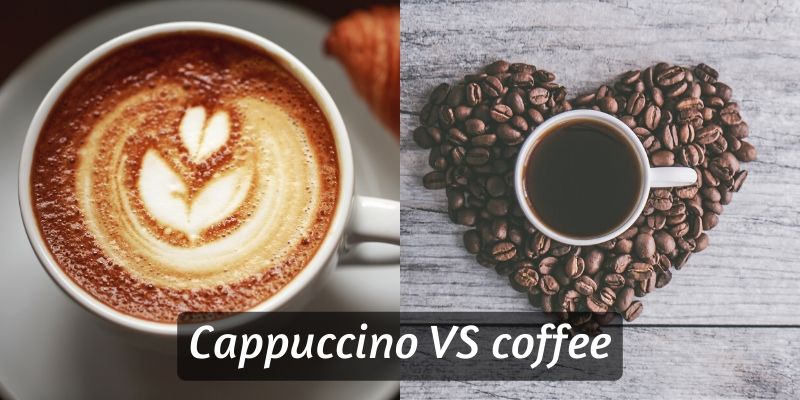
Cappuccinos differ from conventional coffee in that they are created with espresso, steamed milk, and foamed milk. Regular coffee can be made using any roast of coffee beans and a variety of coffee machines.
The distinction between a cappuccino and a cup of coffee is explained.
Espresso is a coffee produced by pushing pressure water through finely ground coffee beans. The resulting coffee is flavorful and thick in texture.
Cappuccinos are made creamy and frothy by adding milk and foam.
Dark roasted beans are better for making espresso because they contain a higher concentration of oils needed to produce the trademark espresso flavor.
Look below for a breakdown of all the key distinctions between a cappuccino and coffee:
| Comparison: | Capuccino | Coffee |
| Which coffee? | One espresso shot | Brewed coffee |
| Milk used? | Yes, 1/2 cup (0.12 l) | No milk used |
| Taste | A smooth and creamy flavor | Quite robust and balanced flavor |
| Caffeine content | 68mg of caffeine | 170mg to 220mg of caffeine |
| Calories per serving | 70 calories | Virtually no calories |
| Topping? | A dusting of cocoa powder or cinnamon | No topping |
| Coffee roast | Dark roast | All coffee roasts |
What is the difference between a cappuccino and a cup of coffee in terms of preparation?
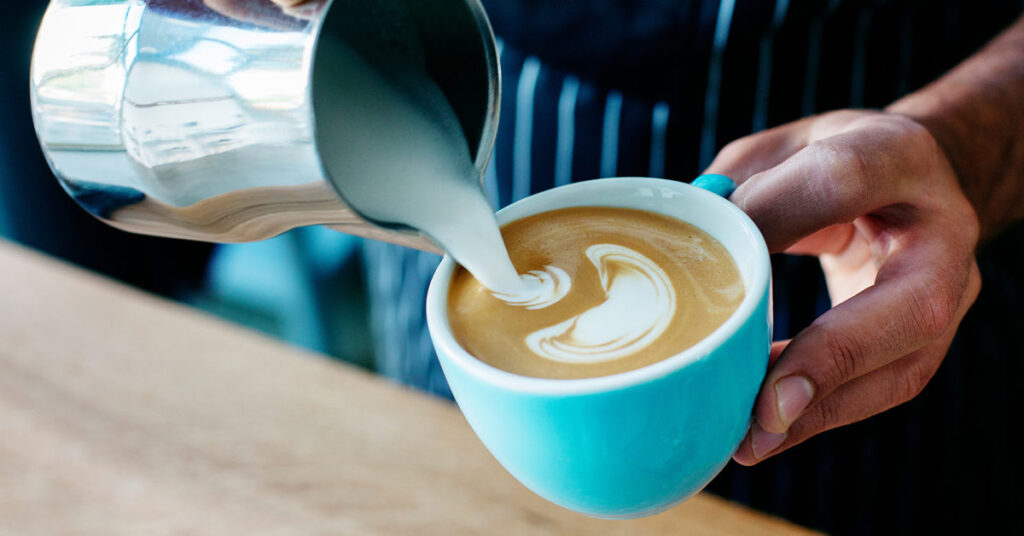
The milk is the primary distinction between a cappuccino and a cup of coffee. Cappuccino contains more foam than coffee and is often served in a cup. In a cappuccino, the milk is frothed before being added to the coffee, whereas coffee is simply brewed with hot water.
Espresso coffee is brewed first for the cappuccino. The milk is then heated and frothed until it has a lovely layer of foam on top.
On top, equal parts espresso, steaming milk, and milk foam are blended.
Ground coffee beans are brewed with hot water to make coffee. There are numerous methods for making coffee at home. The following are some options for brewing coffee:
- A pour over brewer, such as a Chemex or Hario V60, can be used to make coffee. This will result in a well-rounded coffee flavor.
- You can use the French press to make a stronger cup of coffee.
- You may also make an Americano. Espresso coffee and hot water are combined to make an Americano. Most people consider this to be regular coffee.
The most noticeable difference between these drinks is that one is made with 2/3 milk (cappuccino) and the other is just plain coffee with no milk added.
Is a cappuccino stronger than coffee?
A cappuccino is not stronger than coffee. It is produced with espresso and steamed milk, whereas coffee is simply brewed with water, giving it a stronger flavor overall because no milk is added.
Espresso has a stronger flavor since it is brewed with finer ground coffee beans and contains more caffeine (which I will discuss further down). However, the addition of milk dilutes it, makes it sweeter, and gives it a milky flavor.
As previously stated, you can create coffee using a variety of brewing processes, resulting in a variety of flavors and strengths.
Espresso and hot water are used to make an Americano. And brewed coffee beans are used to make a cup of coffee. As a result, the strength of each of these drinks varies.
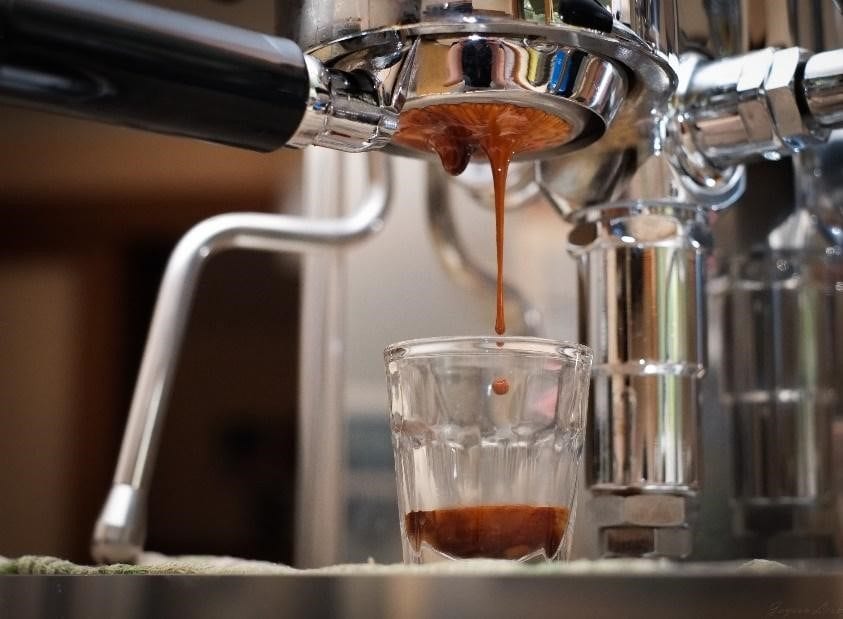
Darker roasted coffee has a more robust flavor and is commonly used for espresso coffee. It also works well with French press coffee.
Did you realize that blonde-roasted coffee is stronger than dark-roasted coffee? You can read this article in which I compare the two coffee roasts.
What is the calorie difference between a cappuccino and a cup of coffee?
The calorie difference between a cappuccino and coffee is minimal, however a cappuccino has more calories due to the milk. A basic cup of coffee contains almost no calories, whereas a cappuccino contains 60-70.
So, if you’re managing your calorie consumption, stick to ordinary coffee.
If you want to sweeten your coffee or cappuccino, you will boost the calories in your drink.
Hot coffee is usually sweetened with ordinary or brown sugar. Did you know that honey goes well with your morning coffee? More information can be found here!
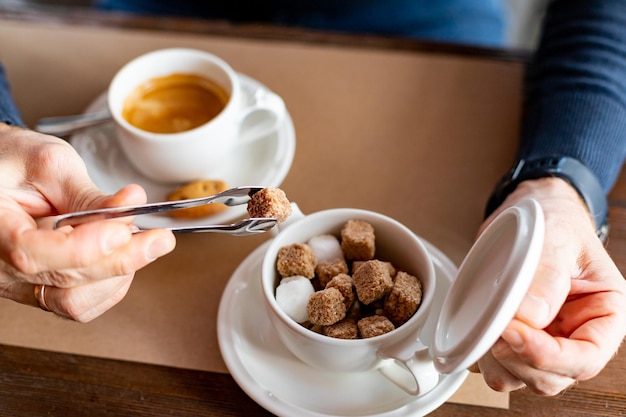
Many coffee add-ins, such as coffee syrups, work well with these coffees and can give your coffee the flavor you desire. You may find some fantastic DIY add-ins here.
Caffeine difference between cappuccino and coffee
When comparing a cappuccino to coffee, there is a significant variation in caffeine content. Take a look at the following:
- Based on one espresso shot, a cappuccino contains 68mg of caffeine.
- Coffee contains between 170 and 220mg of caffeine per 8-ounce cup.
Regular coffee can be brewed using a variety of brewing methods, each of which produces a varied flavor and amount of caffeine per serving.
Pour over coffee has the lowest caffeine content per serving, with 170mg. French press coffee, on the other hand, contains the most caffeine per serving, with 220mg per 8-ounce cup. (source)
Which do you prefer: cappuccino or coffee?
This question has no right or incorrect answer; it all relies on your particular preferences.
Some individuals like cappuccinos because of the extra sweetness and creaminess, but others prefer coffee because of the stronger flavor.
Personally, I like both beverages, but I prefer cappuccinos in the morning and coffee in the afternoon.
After dinner, I drink decaf coffee to get that great coffee taste without the caffeine that regular coffee contains.
Did you realize that decaf coffee doesn’t taste any different than regular coffee? More information about it may be found here!
Are you still undecided about which option is best for you? Then I propose the following:
- Cappuccinos are preferred by folks who prefer a creamy, rich coffee drink. Plus, I believe it looks better with the frothed milk on top.
- Coffee is a preferable option for individuals looking for a robust, slightly bitter beverage with more caffeine per cup.
It all comes down to personal preference. The ultimate approach to determine which one is best for you is to taste them side by side.
More comparisons
Lattes vs. Macchiatos
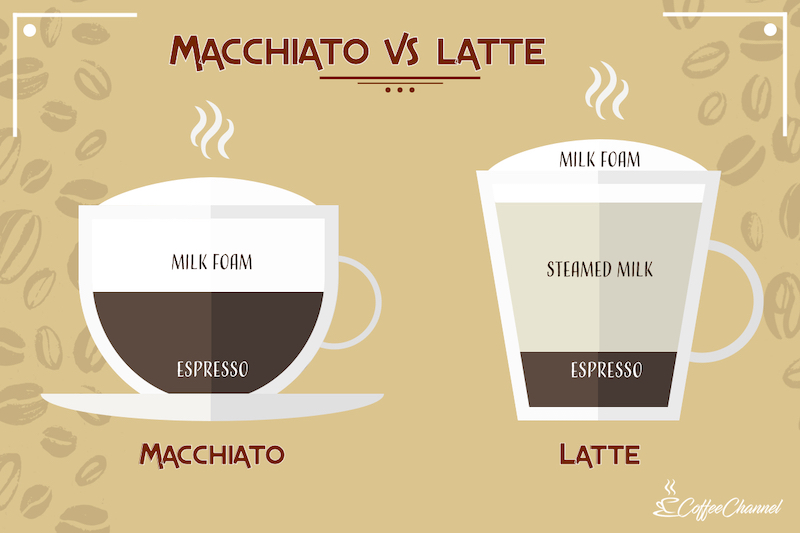
In addition to cappuccino, there are other variations of Italian coffee drinks that are often confused with American coffee. Lattes and macchiatos both have espresso and steamed milk, but they are prepared differently.
While cappuccino is prepared by pouring steamed milk on top of espresso, lattes are prepared by pouring espresso over steamed milk. Macchiatos are made with a shot of espresso “marked” with a layer of foamed milk.
Macchiatos are sometimes confused with another Italian variation, the caffe latte. Both drinks include a layer of foamed milk in the drink, but caffe lattes are made with a larger amount of foam and serve
The first lattes were created in Italy in the 1950s, but the drink didn’t become popular in the U.S. until the early 2000s. Now, lattes are one of the most popular coffee beverages in America, often sold alongside macchiatos at coffee shops.
Cappuccino vs. Cafe Latte
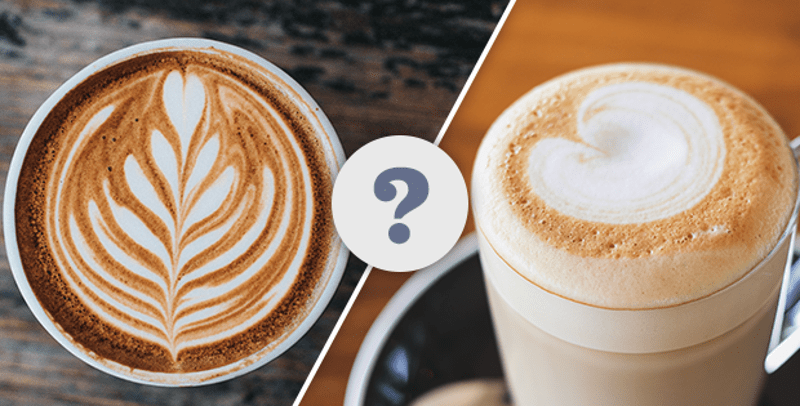
A cappuccino is a very different drink than a latte, despite the shared use of milk. A latte is made with espresso topped with a layer of foamed milk, but it doesn’t have the same distinct layer of foam that is found in a cappuccino. And while a cappuccino is usually smaller in size than a latte, this isn’t always the case. The name “latte” actually means “milk” in Italian, and so it’s not surprising that this drink also uses more milk than a typical American cup of coffee (which uses grounds and water).
A cappuccino is made with steamed milk that is microfoamed to create tiny air pockets. A traditional cappuccino should feature three layers: one layer of crema, one layer of microfoam, and one layer of regular foam. A caffe latte, on the other hand, is made with espresso poured into a cup filled with steamed milk. The drink is often served layered and topped with sweetened syrups like vanilla or caramel.
Unlike coffee, which can be both filtered and unfiltered, cappuccino is almost always prepared using filtered espresso. The beverage also uses steam-heated milk that has been microfoamed to create its distinctive texture.
Coffee vs. Espresso
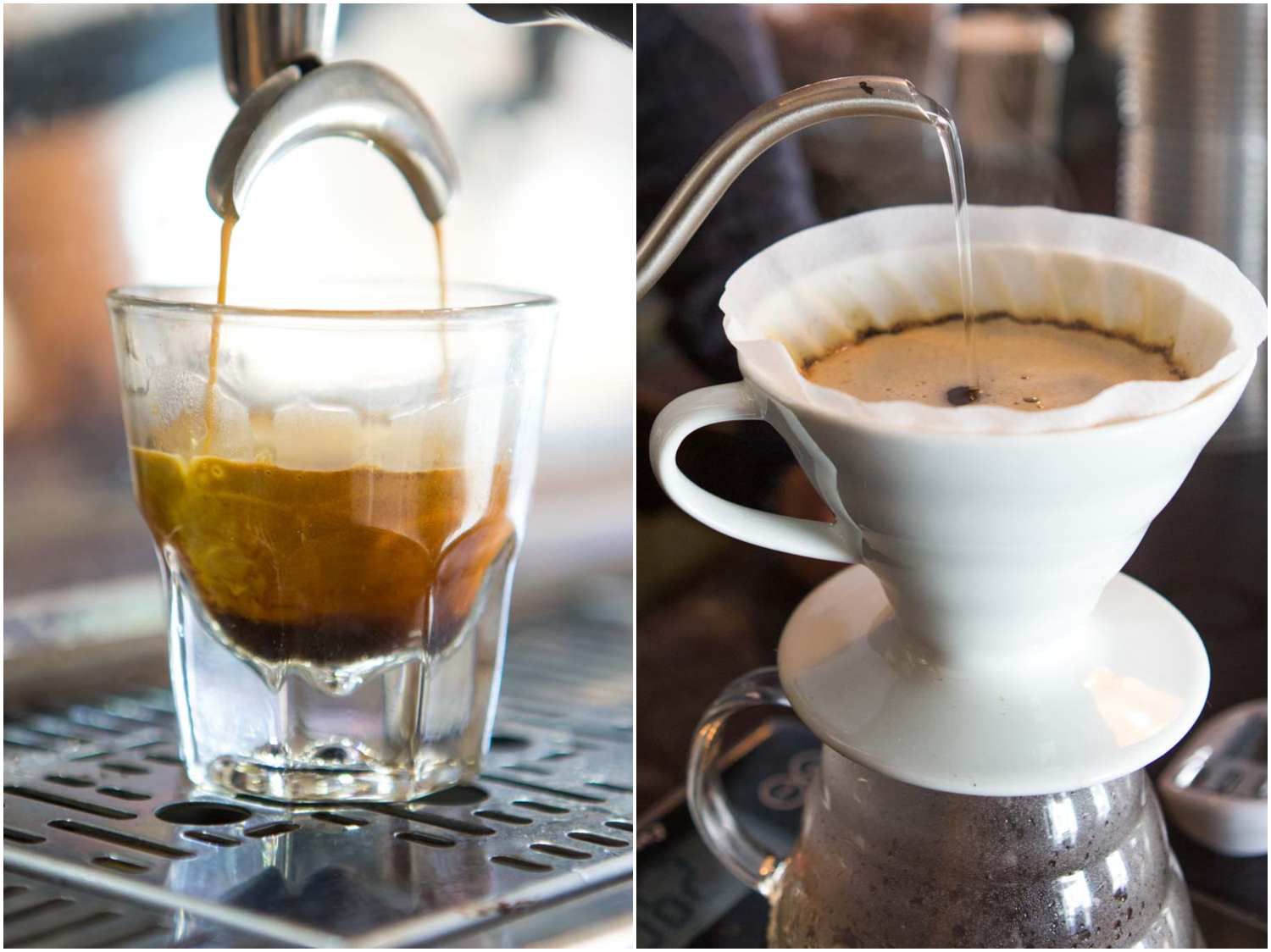
Cappuccino is a variation of the beverage known as “espresso,” which is brewed using a similar process. Both espresso and cappuccino are made with finely ground coffee beans and hot steamy water. The main difference is that espresso uses a specifically-sized filter that produces concentrated coffee, while cappuccino uses a larger basket filter to create a less strong brew.
In addition, espresso is typically served in smaller portions, while cappuccino can come in either a small or large cup.
Espresso is also made with a layer of crema, which is created by oils floating to the top of the beverage. Cappuccino does not have this layer, though some variations do use a “mocha” topping that’s made with chocolate syrup. Coffee and espresso also have different origins. Coffee originated in Africa and spread to Europe, where it became quite popular. Espresso originated in Italy, where it’s still popular today.
The Difference Between Foam and Latte Art
A cappuccino is similar to a latte, but the two drinks are prepared differently. When making a latte, the espresso and steamed milk are poured simultaneously into a glass or ceramic cup and mixed with a metal or plastic paddle. The beverage is topped with a layer of foam made either by pouring steamed milk directly into the drink or by working stiffer milk with a spoon or metal frother.
A cappuccino, on the other hand, is made by pouring a single shot of espresso into an espresso cup. The cup is then filled with steamed milk and stirred lightly with a spoon to create an even mix. The steamy mixture is poured over the back of a spoon so it can gently float on top of the layer of foam. The drink is topped with a dusting of cocoa powder, cinnamon, or sugar.
In addition to being prepared differently, a cappuccino also has different ingredients. A standard American coffee is made from ground coffee beans infused in hot water, while an Italian cappuccino is made using espresso and steamed milk. A standard American coffee can be ordered as either regular (no foam) or extra-extra (with two layers of foam), while in Italy, it’s typically served only with one layer of foam.
How to Order
If you’re at an American coffee shop and are looking for a cappuccino, you don’t have to know the specific terms used in Italian to order it. Simply say “cappuccino” or “triple short macchiato” (a macchiato is an espresso with a small amount of milk) and the barista will know what you’re asking for.
Alternatively, you can ask for a “latte” or “latté,” and while that may not get you a true cappuccino, it will get you something similar. These drinks are made with steamed milk infused with espresso, and they can be topped with foam if you ask. However, the foam on an American latte is typically considerably thinner than the foam on a cappuccino.
When ordering coffee at a coffee shop, simply order your drink by its name. Most coffee shops have several coffee variations available, so there’s likely more than one version of coffee made from ground beans that is available on the menu.
Health Benefits
Coffee and cappuccino are both healthy choices when consumed in moderation. Cappuccino is a nutrient-dense beverage, and the addition of milk boosts its health benefits. Cappuccino can also be made with non-dairy milk options like soy or almond milk, which are healthier than whole milk.
Coffee is a source of antioxidants and other nutrients, but it isn’t as rich in nutrients as cappuccino. The addition of sugar and cream or other dairy products can quickly reduce the beverage’s healthy properties, so be sure to opt for sugar-free syrups and unsweetened dairy products if possible.
Both beverages contain a small amount of protein, but coffee has slightly more than cappuccino, due to the addition of dairy. Coffee also contains a small amount of fiber, but you’ll get more fiber from drinking cappuccino with an added shot of espresso.
Bottom line
In the end, it all comes down to your personal preference. If you want a stronger coffee flavor with a bit of a creamy finish, a cappuccino might be just the thing for you. If you prefer a lighter, milder coffee flavor, coffee is the way to go. Both drinks are delicious and can provide you with an energy boost. Whether you choose cappuccino or coffee, you can’t go wrong; both drinks will keep you going throughout the day. So go ahead and try both beverages and find out which one is your favorite!
